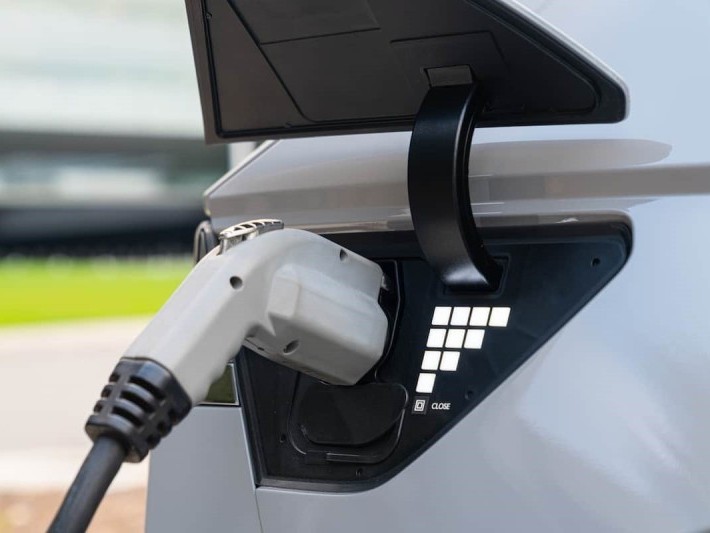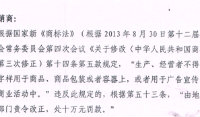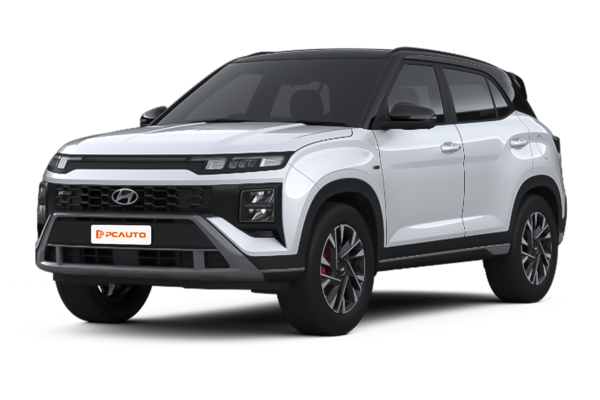Q
How many cc is a Creta 1.4 engine?
The Modern Creta's 1.4-liter turbocharged gasoline engine actually displaces 1353cc, a unit you'll typically find under the hood of the mid-to-high spec Creta models here in Malaysia. It cranks out a solid 140 horsepower and a meaty 242 Nm of torque, paired with a 7-speed dual-clutch transmission. This setup delivers more than enough pep for city commutes and handles light off-road jaunts with ease.
Now, it's worth remembering that while displacement (cc) gives you a sense of an engine's size, real-world performance is a mix of turbocharging tech, fuel injection systems, and more. Take the Creta 1.4T, for example – it might have a smaller displacement than a naturally aspirated 1.5-liter engine, but that turbocharger helps it punch above its weight in terms of efficiency and power.
For Malaysian car buyers, here's the lowdown: smaller turbo engines often win when it comes to fuel economy and road tax savings. That extra efficiency really shines when local fuel prices start bouncing around, keeping more cash in your pocket. And don't forget – regular maintenance on that turbo system is key to keeping it running strong for the long haul.
Special Disclaimer: This content is published by users and does not represent the views or position of PCauto.
Related Q&A
Q
What type of car is Hyundai Creta?
The Hyundai Creta is a subcompact SUV (Sport Utility Vehicle) designed primarily for city driving and family use, blending practicality with a stylish exterior. It's pretty popular here in Malaysia, and it's easy to see why. It offers a nice high driving position, a roomy interior, and good fuel economy – all things that work really well with our local road conditions and family needs.
Creta usually comes packed with Hyundai's latest tech, like touchscreen infotainment systems, smart key entry, and a bunch of safety features. That makes it a solid competitor in its class. Subcompact SUVs have been blowing up in popularity worldwide lately, and Malaysia's no exception. Their flexibility and versatility make them a top pick for a lot of shoppers.
Hyundai's got plenty of experience under its belt when it comes to designing and building small SUVs, and the Creta is a great example of that expertise. It's perfect for buyers who want the utility of an SUV but don't want to compromise on easy maneuverability or fuel efficiency. If you're in the market for an affordable, well-rounded SUV, the Hyundai Creta is definitely one to check out.
Q
How to Update the Navigation Maps in the Hyundai Creta?
To update the navigation system maps in your Hyundai Creta, start by grabbing a USB drive formatted to FAT32. Head over to Hyundai Malaysia's official website, navigate to their navigation update page, and download the latest map data specifically for the Creta. Unzip that file directly to the root folder of your USB drive—don't bury it in subfolders. Next, plug the USB into the center console's USB port, fire up the car, and go into the navigation system's settings menu. Look for the "Update Map" option, then just follow the on-screen prompts to finish the job. The whole process usually takes between 30 minutes to an hour, so it's smart to keep the engine running to avoid draining the battery.
Pro tip: Hyundai typically rolls out map updates for the Creta every six months or so. Signing up as a member on Hyundai Malaysia's site is a good move—they'll shoot you a heads-up when new updates drop. Your local Hyundai dealer should also remind you about map updates during regular service visits.
If you're not keen on the official update route, remember the Creta's infotainment system supports Apple CarPlay and Android Auto. That means you can just mirror your phone's navigation apps like Google Maps or Waze. These apps update automatically and show real-time traffic, which is super handy in Malaysia where road layouts can change pretty frequently.
One last thing: Before hitting the road for a long trip—especially if you're heading to East Malaysia or areas with newly built roads—double-check your map version. It’s better to be safe than sorry and end up with outdated directions when you need them most.
Q
How many kilometers can the Hyundai Creta travel on one liter of fuel?
When it comes to the fuel efficiency of the Hyundai Creta with the 1-liter engine, how many kilometers does it get per liter? Well, its fuel consumption really depends on the specific trim and your driving conditions. Official figures peg its fuel efficiency at around 14 to 16 kilometers per liter, though your real-world mileage might vary. For a compact SUV, that's actually pretty solid—it strikes a nice balance between city commuting and highway cruising.
A bunch of factors can affect how much fuel it burns, like your driving style, road conditions, how much weight you're carrying, and even using the AC. If you want to squeeze out better mileage, try accelerating smoothly and easing up on sudden braking. Also, keeping up with regular maintenance—stuff like changing the air filter and making sure your tires are properly inflated—goes a long way in maintaining that fuel efficiency.
The Creta's Smartstream engine technology is all about efficient combustion and lower emissions, and when you pair that with the lightweight body design, it really helps boost the fuel economy. If you're into more fuel-efficient models, you might want to check out Hyundai's hybrid or electric options too—they can be even better for the environment and long-term running costs.
Q
What is the displacement of Hyundai Creta?
The Hyundai Creta hits Malaysian roads with two engine choices: a 1.5-liter naturally aspirated petrol and a 1.5-liter turbocharged diesel. The petrol unit, displacing 1497cc, cranks out 115 hp and 144 Nm of torque. The diesel, also 1497cc, matches the 115 hp but ups the ante with a meaty 250 Nm of torque. Both mills come mated to either a 6-speed manual or automatic gearbox, striking a balance between fuel efficiency and everyday driveability.
As Hyundai's main SUV player in Southeast Asia, the Creta's engine is tuned to deliver strong low-end torque – perfect for Malaysia's mix of city streets and occasional weekend getaways out of town. It also gets Hyundai's Smartstream tech, which optimizes combustion to keep fuel consumption in check. For Malaysian buyers, that 1.5-liter displacement sweet spot means it's great for daily commutes while keeping running costs low, especially with fuel tax considerations.
Rivals like the Honda HR-V and Toyota Corolla Cross play in the same displacement ballpark, but the Creta fights back with a longer warranty and a solid list of standard features, giving it an edge when it comes to bang for your buck.
Q
What is the price of Hyundai Creta?
In Malaysia, the Hyundai Creta's pricing varies depending on the trim and specs, typically ranging from RM 108,888 to RM 132,888. Keep in mind though, actual prices might shift slightly due to promotions or dealer-specific policies across different regions.
As one of Hyundai's most popular compact SUVs, the Creta offers two engine choices to suit different driving styles: a 1.5L naturally aspirated unit and a peppy 1.4L turbocharged option. Transmission-wise, you've got the 6-speed manual for those who prefer shifting gears themselves, or the smooth 7-speed dual-clutch auto for effortless cruising.
Step inside, and the Creta focuses on practicality without skimping on tech. There's an 8-inch touchscreen infotainment system that hooks up seamlessly with Apple CarPlay and Android Auto—handy for staying connected on the go. Safety hasn't been overlooked either, with 6 airbags, vehicle stability control, and a rearview camera as standard fare.
For Malaysian drivers, the Creta checks a lot of local boxes: its fuel efficiency and decent ground clearance make it a solid fit for our roads, whether you're navigating city traffic or tackling the occasional rough patch. Plus, Hyundai's 5-year unlimited mileage warranty adds that extra peace of mind—always a big plus when buying a new ride.
If you're hunting for a compact SUV that balances value and versatility, the Creta should definitely be on your shortlist. Do yourself a favor and swing by your nearest Hyundai dealership for a test drive—nothing beats getting behind the wheel to really feel if it's the right fit for you.
Q
What is the price of Hyundai Creta?
The Hyundai Creta Trend is currently priced at around RM 115,888 in Malaysia (excluding insurance and road tax), though this figure might vary slightly depending on ongoing promotions or any optional extras you might add. This B-segment SUV is powered by a 1.5L naturally aspirated engine churning out 115PS and 144Nm, paired with an IVT transmission. You get LED head and tail lights as standard, along with an 8-inch touchscreen that supports Apple CarPlay and Android Auto, plus a reverse camera. The 2,610mm wheelbase translates to a pretty roomy rear cabin, which is a strong point in its class.
One thing that really stands out is that all Creta variants come standard with Hyundai SmartSense driver assistance suite. That means you're getting features like Lane Keeping Assist and Autonomous Emergency Braking right from the get-go – a definite advantage over some Japanese competitors in the same price bracket. If your budget is a bit tighter, the entry-level Creta Lite (around RM 108k) is worth a look, though you will miss out on some creature comforts like power-adjustable seats. On the flip side, if you're craving more punch under the hood, keep an eye out for the upcoming 1.4T turbocharged version.
As always, I'd strongly recommend heading down to an authorized Hyundai dealer for a test drive. It's also a good idea to cross-shop with rivals like the Proton X70 and Honda HR-V to really get a feel for the differences in space and tech offerings. Hyundai's 5-year unlimited mileage warranty in Malaysia is another big plus, especially for buyers who are conscious about long-term ownership costs.
Q
Which country is Hyundai Creta made in ?
The Hyundai Creta is an SUV sold in multiple markets worldwide, with its production location depending on the specific sales region. The Hyundai Creta sold in Malaysia is mainly imported from India, as India is one of Hyundai's key production hubs, specifically manufacturing this model for the Asian market. The Indian plant adheres to global uniform production standards, ensuring vehicle quality meets international benchmarks while also better satisfying Malaysian consumers' demand for a high-value-for-money SUV. With its sleek design, spacious interior, and generous features, the Creta has gained quite a following among family buyers in Malaysia. It's worth noting that Hyundai has numerous production bases globally, and this global footprint allows the brand to efficiently supply different markets with suitable models. For instance, besides India, Indonesia and South Korea also produce some Hyundai models, but the Creta supplied to Malaysia currently remains predominantly Indian-made. For Malaysian consumers, choosing the Creta means not only accessing Hyundai's latest technology but also enjoying a more competitive price advantage.
Q
How many seats in Hyundai Creta?
The Hyundai Creta is a five-seater compact SUV that’s perfect for Malaysian families or daily commuting. Its roomy interior and smart seat layout ensure passenger comfort, with rear legroom that’s actually pretty decent – even on longer drives, you won’t feel cramped. It’s super popular in the Malaysian market, and that’s not just down to its practical five-seat setup. It also packs a good amount of tech and efficient powertrain options, like the 1.5-liter naturally aspirated petrol engine and 1.5-liter diesel. These engines strike a nice balance between fuel economy and performance.
On top of that, the Creta comes with advanced smart driving assists, things like Lane Keeping Assist and Autonomous Emergency Braking, which really boost safety on the road. Another big plus for Malaysian buyers is its generous ground clearance, making it easy to handle our country’s sometimes unpredictable road conditions – whether you’re zipping around the city or heading out for the occasional weekend trip out of town, it can handle it. If you’re in the market for an SUV that offers great value, plenty of space, and a solid list of features, the Hyundai Creta is definitely one to consider. Its all-around package ticks most boxes for what a family would need.
Q
How many cc is a 1.4 engine?
A 1.4-liter engine typically has a displacement ranging from 1390cc to 1400cc, with the exact figure sometimes varying slightly depending on the automaker's tuning – you might see specs like 1396cc or 1398cc on certain models. In the Malaysian market, 1.4L engines are commonly found in economy cars and small SUVs, think local favorites like the Perodua Myvi and Proton Saga, along with select international brand models. These engines strike a nice balance between fuel efficiency and everyday power, making them perfect for city driving.
Displacement (cc) measures the total volume of the engine's cylinders; generally, a higher number means more power, but it also tends to gulp more fuel. The 1.4L sits in the small-to-mid displacement category, aligning well with Malaysian buyers' focus on practicality and fuel savings. Plus, modern 1.4L engines often come with turbocharging (badged as 1.4T), which boosts power without upping the displacement. If you're car shopping, it’s worth comparing the performance differences between naturally aspirated and turbo versions to see which fits your needs better.
Q
What is the displacement of Creta?
In the Malaysian market, the Hyundai Creta comes with two engine options: a 1.5-liter naturally aspirated petrol and a 1.5-liter turbocharged diesel, both displacing 1,500cc. The petrol unit cranks out 115 horsepower, while the diesel variant pushes out around 115 hp or more, depending on the specific tuning. As a popular compact SUV, the Creta's engine displacement strikes a nice balance between everyday fuel efficiency and decent power, making it a solid fit for Malaysia's urban roads and short getaways.
It's worth keeping in mind that while cc (cubic capacity) gives you an idea of engine size, real-world performance depends on a mix of factors like turbocharging tech and fuel injection systems. Take rivals like the Honda HR-V or Toyota Corolla Cross, for example—they also use similar displacements but tune their engines to prioritize different aspects of performance. So, when shoppers are checking out the Creta, they should look beyond just cc; torque output, transmission pairing, and real-world fuel economy all play a big role in how the car actually drives.
Popular Cars
Model Year
Car Compare
Car Photo
Latest Q&A
Q
Why is gasoline a fuel?
Gasoline can serve as a fuel because it possesses core properties suitable for providing power and the ability to convert energy. It is a hydrocarbon mixture obtained through fractional distillation and cracking of petroleum, mainly containing C5-C12 aliphatic hydrocarbons, naphthenes, and a small amount of aromatic hydrocarbons. It is characterized by volatility and flammability, with low viscosity facilitating smooth flow in injection systems, and rapid evaporation enabling quick formation of a uniform combustible mixture with air. Gasoline stores chemical energy; when ignited by a spark plug in the engine combustion chamber, it burns rapidly to release a large amount of thermal energy, which pushes the piston to move and converts into mechanical energy, providing power for vehicles such as cars and motorcycles. In addition, the anti-knock property of gasoline (measured by octane number) can adapt to engines with different compression ratios, ensuring stable operation and performance; it has a high energy density, storing more energy per unit volume, good combustion efficiency, and high availability of gas stations for convenient use. Therefore, it has become the main fuel for spark-ignition internal combustion engines and is widely used in transportation and related fields.
Q
What are 1st, 2nd, and 3rd family gases?
The first, second, and third family cars are vehicle categories classified based on the stages of family car-purchasing needs. The first family car is an entry-level economical model, such as the Perodua Axia and Proton Saga, priced at approximately 30,000 to 50,000 Malaysian ringgit. It emphasizes fuel efficiency and practicality, making it suitable for young families purchasing a car for the first time. The second family car falls into the mid-range category, offering more space and enhanced features, such as the Proton Persona and Toyota Vios, priced between 60,000 and 100,000 Malaysian ringgit, catering to the comfort requirements of growing families. The third family car is a premium model or an MPV/SUV, such as the Proton Exora and Honda CR-V, priced above 100,000 Malaysian ringgit. It boasts spacious interiors and upscale configurations, ideal for larger families or long-distance travel. Malaysian consumers typically prioritize fuel efficiency, maintenance costs, and space when selecting a vehicle. Families at different life stages adjust their car choices accordingly. For instance, small families may begin with the first category, upgrade to the second after having children, and larger families often opt for the third category.
Q
What are the four types of natural gas?
Natural gas can be classified into four main types based on its source: gas field gas (pure natural gas), associated petroleum gas, condensate field gas, and coalbed methane. Gas field gas is directly extracted from gas wells, typically containing over 90% methane with minimal impurities. Associated petroleum gas is a byproduct of oil extraction, containing not only methane but also significant amounts of other hydrocarbons such as ethane and propane. Condensate field gas yields light hydrocarbon fractions during extraction, characterized by a high methane content and small quantities of heavier hydrocarbons like pentane. Coalbed methane is extracted from underground coal seams, primarily consisting of methane and nitrogen, and must have a methane content exceeding 40% to be utilized as fuel. Due to compositional differences, these natural gas types vary in calorific value and applications. The first three are commonly used for urban gas supply, whereas coalbed methane requires purification before effective utilization. As a clean and efficient energy source, the development and utilization of these diverse natural gas types play a crucial role in optimizing energy structure.
Q
What are the three types of fuel gas?
Common fuel gases are mainly divided into three types: natural gas, liquefied petroleum gas (LPG), and manufactured gas. Natural gas is a flammable gas existing in nature, with methane as its main component. It is colorless and odorless, leaves no residue after combustion, and has high thermal efficiency, making it a clean energy source. Liquefied petroleum gas is a by-product of the petroleum refining process, whose main components include propane and butane. It is a gas at room temperature but can be converted into liquid through pressurization and cooling, facilitating storage and transportation. Manufactured gas is generated through thermochemical reactions of fossil fuels such as coal or petroleum under specific conditions, with main components including hydrogen, carbon monoxide, and methane. It has low production costs but produces certain pollution after combustion, so ventilation should be ensured during use. These three fuel gases have different application scenarios in the energy supply field, and their calorific values and usage characteristics also vary. For example, the calorific value of natural gas is approximately 33,000-36,000 kcal per cubic meter, that of LPG is about 90,000 kcal per kilogram, and that of manufactured gas is roughly 3,500-4,200 kcal per cubic meter. The different calorific values make them suitable for different energy demand scenarios such as households and industries.
Q
Is unleaded petrol a gas?
Unleaded gasoline is not a gas but a liquid fuel. It refers to gasoline with a lead content of less than 0.013 grams per liter and without the addition of tetraethyl lead as an anti-knock additive during the refining process. Its octane rating is typically 95, slightly lower than the 97 of leaded gasoline. The use of unleaded gasoline can effectively reduce emissions of harmful substances such as hydrocarbons, carbon monoxide, and nitrogen oxides in vehicle exhaust, thereby lowering pollution risks including smog, toxic gases, and acid rain. However, it should be noted that while unleaded gasoline contains no artificially added lead, it still retains trace amounts of lead from crude oil. Additionally, its combustion releases gases, particulate matter, and condensates, with particles smaller than 2 microns in diameter being particularly prone to prolonged suspension in the air and subsequent human inhalation. Thus, potential health impacts remain a concern. Currently, most vehicles can use unleaded gasoline directly, though certain models require selecting the appropriate octane grade as recommended by the manufacturer to ensure optimal engine performance and longevity.
View MoreRelated News

2026 Toyota HiLux receives five-star ANCAP safety rating in ANCAP
MichaelDec 12, 2025

In Malaysia, which sliding door MPVs are available?
MichaelOct 30, 2025

Modern Ioniq 5 N Lands in Malaysia: Track-Level Performance Electric Vehicle is Here, Priced Possibly Below RM 400,000?
JohnSep 10, 2025

Hyundai's Big Return to Malaysia: Top 5 Models Expected
MichaelMay 30, 2025

580,000 km & 87.7% Battery Health: Ioniq 5’s Incredible Durability
MichaelMay 6, 2025
View More


















Pros
Cons